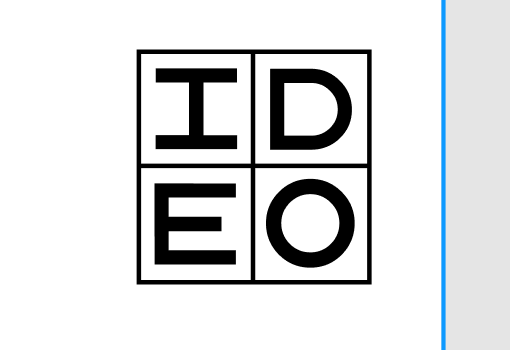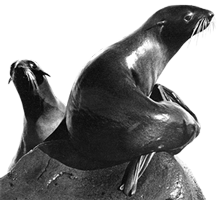Today’s leaders understand how essential workplace culture is to their success. Assembling the right teams - and creating conditions for them to thrive - might be the most important thing we do as leaders. But it ain’t easy these days. As many organizations struggle with employee engagement and retention, they also face a rapidly changing market, where expertise, resilience, and creativity are at a premium. They need people to be doing dynamic work, but their culture isn’t set up to support it.
Every day seems to bring fresh and unpredictable challenges to how we work. So why do we keep looking to the same resources to solve them?
The key might be to look for inspiration in an unexpected place: play.
Hi- I’m Matt, and I’m a game designer in the IDEO Play Lab. I’ve been using Play to lead creative teams for 20 years - from legendary comedians at The Second City to brilliant designers at IDEO. And while developing a comedy show and designing for a better future might seem worlds apart, the art and science of enabling people to do inspired work is surprisingly consistent.
Play is uniquely suited to help teams feel successful, seen, and supported. These are three emotional pillars that become the scaffolding for them to bring their talents and perspectives to bear. And while we can’t tell people how to feel, we can design conditions that allow these feelings to emerge. It’s like creating a greenhouse - you can’t tell a plant to grow, but you can surround them with sunlight, temperature control, water access, space, and other things that they will need to thrive.
In this two-part series, my Play Lab colleagues and I will explore some inspiration around how to lay the foundations for people to feel successful, seen, and supported. To kick us off for Part I, Senior Interaction Designer Kezie Todd and I will examine how game design has some wonderful models for making people feel successful.
Success in this context is personal. It’s the feeling that comes when you are contributing to the greater good and getting better at the things that matter to you. The key is to strive for the sweet spot between feeling challenged (which is exciting) and feeling frustrated (which is demoralizing).
As game designers, we have a term for the state of being in this sweet spot: flow. (originally coined by psychologist Mihály Csíkszentmihályi as the state of being fully immersed and engaged. Google his work, it’s worth it).
The DNA of flow is simple: these activities are superbly balanced to give you small short term rewards while dangling incentives that are just out of reach, and the gameplay is designed to level up your skill while you play.
Let’s look at three game design techniques that can create the conditions of flow for our teams:
1. Onboarding & Progressive Skill Synthesis
aka how Zelda can level up your 101s
Onboarding might happen at a specific moment in time when an employee first joins your company or project. It’s a one-time, one-off thing.
But in games, onboarding to new skills and environments is constant.
Zelda: Breath of the Wild is a shining example of this. You start the game with no equipment or skills. For each new skill and weapon you unlock, there is a mini-tutorial to learn its basics. But, more importantly, every new skill is funneled into challenges in the form of shrine puzzles solvable by that skill. (Think: a cog you can only turn by using that magnetic skill you just learned.) Learning by doing at a constant rate not only makes for more effective learning, it also keeps you in the flow because there is always a new challenge to push your understanding of the tools you’re acquiring.

These challenges also serve to teach a progressive synthesis of skills, introducing areas where you can safely experiment and learn to mix and match all the tools in your arsenal. This level of creative problem solving keeps the game fresh and engaging, with multiple ways to overcome every challenge. And innovation happens, too, as players start creatively mixing and matching the tools to invent new tricks like launching goblins (and themselves) over mountains.
To apply this principle we might ask: What if workplaces rewarded your creativity with new skills to learn and new challenges as a platform to experiment and stay in the flow?
Imagine weekly up-skilling sessions open to all as refreshers on what’s needed to do great work. Or if every time a project wrapped, teams were empowered to share templates and tools they used along the way to contribute to an internal library of goodies for others to pick up?
2. Feedback Loops
aka why games that reward failure = experimentation superfood
Feedback loops in games are systems designed to react to how well the player is doing in order to make the games more rewarding – i.e. keep them in that flow we talked about earlier.
This can look like a positive feedback loop, where players are rewarded for doing well, or a negative feedback loop that helps restore balance in the system. Feedback loops incentivize specific behaviors workplaces might not, like rewarding (and learning through) failure.

Hades, a game where you try to escape Hell– and die repeatedly in the process– is from the roguelite family of games which employ feedback loops to reward failing. Every time you die in Hades, you keep the currency earned to purchase persistent improvements. Plus, you gain the necessary practice to overcome enemies in future. You need to try new weapons and skills each run to discover your favorite mix or even find an unlikely pairing that might help you succeed… or fail spectacularly. Either way, you can always start again with your new knowledge so nothing is truly lost and failure is the only way to succeed.
At IDEO, “Learn From Failure” is one of our seven values. It’s literally written in our employee handbook. Creating “sacrificial concepts” – aka ideas that might never make it to a final product, but might teach us a lot – are an essential part of our project scope.
What if failure was not something to be avoided at all costs but a chance to get creative and find what keeps you in the flow? What if workplaces rewarded experimentation, helping you see the valuable insights learned through success and failure?
3. Progression & Reward
aka what lock picking in Skyrim can teach us about performance reviews
Feedback loops provide a certain kind of assessment of your progress, but a feedback loop works best when it leads to a payoff. Did you complete a level? Unlock a new area of the game? Games keep us coming back for more: we can see and feel our progress.
But at work, not so much. Lengthy review cycles are as much a cause for anxiety as excitement and career advancement happens at a much slower rate than in video games.
Skyrim, a sprawling action roleplaying game where you can customize your character and level them up to unlock new skills, might not be as long as a career. But it can easily span hundreds of hours of play time.
In Skyrim, you get feedback about your progress at every step. Pick enough locks and you’ll see your lock picking skill increase on the spot. Open up your skill tree and you can see precisely what skills you’ve unlocked, how far you’ve progressed in each, and choose where to specialize next to unlock a new ability. It rewards you for how far you’ve come and helps you cash in on practical benefits from that progress.

What if progression in the workplace didn’t only focus on the huge milestones but helped you see and feel your progress at every step? Imagine if every employee had a way to see how their day-to-day work nudged their progress bars along toward goals set for them and by them, visible to both them and their manager. Maybe a glowing review from a colleague counts towards a boost. If they notice they’re struggling, it’s possible for them to course correct to practice that skill over time. How might we support employees to find and develop their unique specialties over time?
If these suggestions intrigue you, it’s not an accident.
Game design is a rich resource for workplace success because it serves up universal principles of motivation, reward, and experimentation. These mechanics work on all of us on a human level. It’s just how we’re wired. But will we be wise enough to pick up Zelda instead of our ancient onboarding manuals the next time we’re designing an orientation?
A more successful team is ready to be unlocked. You just need to press Play. Reach out to helloyplaylab@ideo.com if you’d like to give Play a try and make your teams more successful.
Stay tuned for Part II, where expert experience designer Elise Granata and I will look at how playful workplace rituals can help people feel seen, engaged, and creative.
Heading 1
Heading 2
Heading 3
Heading 4
Heading 5
Heading 6
Lorem ipsum dolor sit amet, consectetur adipiscing elit, sed do eiusmod tempor incididunt ut labore et dolore magna aliqua. Ut enim ad minim veniam, quis nostrud exercitation ullamco laboris nisi ut aliquip ex ea commodo consequat. Duis aute irure dolor in reprehenderit in voluptate velit esse cillum dolore eu fugiat nulla pariatur.
Block quote
Ordered list
- Item 1
- Item 2
- Item 3
Unordered list
- Item A
- Item B
- Item C
Bold text
Emphasis
Superscript
Subscript























